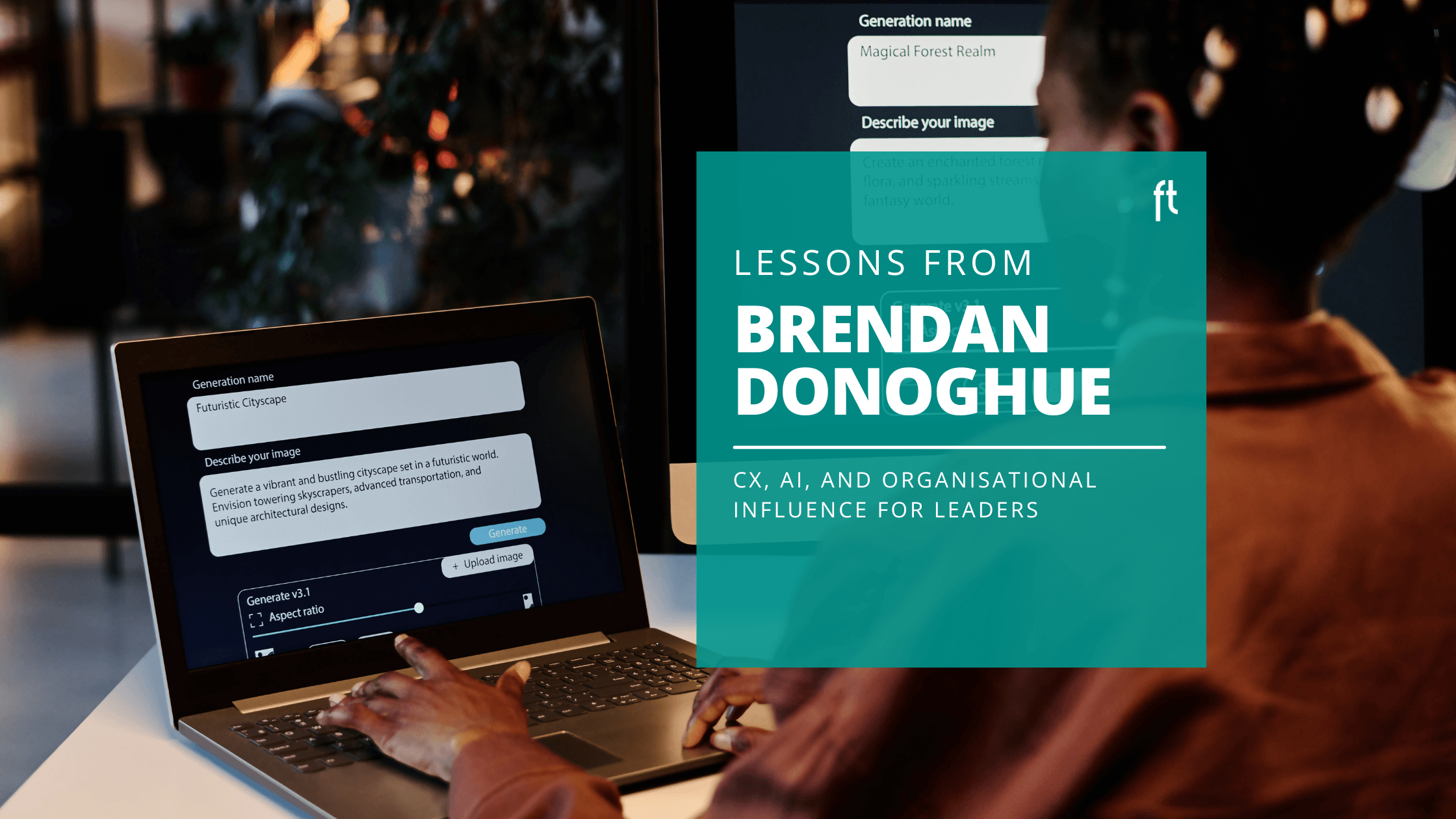The intersection of technology, customer experience (CX), and organisational influence has never been more complex. Brendan Donoghue, a seasoned leader in digital transformation and CX, shared lessons from navigating AI and driving CX-led change in large organisations.
For leaders working in technology transformation, CX, or organisational change, these insights provide actionable strategies to create real impact.
1. Influence Requires Proximity and Bold Action
Brendan’s CX teams often start small but strategically position themselves to maximise influence. By embedding teams within the digital function, they accelerate collaboration and engagement. Physical presence allows participation in everyday conversations, spontaneous meetings, and real-time problem-solving.
Even with the rise of remote work, Brendan emphasises that being physically present—especially in cross-functional environments—strengthens relationships and speeds up decision-making.
Key Points:
Influence grows through proximity and consistent engagement.
Waiting for permission can unnecessarily delay progress.
Physical presence still matters in building influence.
Favourite Quote: “Had I taken the easy path and stayed in my lane, it would have taken me another six to twelve months to build the influence we needed.”
2. Superannuation Engagement Peaks at Key Life Moments
Superannuation is often a low-touch product. Brendan highlighted that member engagement spikes during major life events—like starting a first job, marriage, having children, or approaching retirement.
Research confirms that activity increases most dramatically around age 55, when Australians make critical financial decisions (ASIC Superannuation Insights, ASFA Research).
Instead of pushing daily digital interactions, CX strategies should provide timely tools and guidance, intercepting impulsive or panicked investment decisions to safeguard long-term outcomes.
CX Lessons for Low-Engagement Industries:
Focus on major life moments, not constant engagement.
Enable timely action rather than forcing daily interactions.
Prevent poor decisions to protect outcomes and satisfaction.
Favourite Quote: “Intercepting members before impulsive investment changes can protect long-term financial outcomes.”
3. AI Is a Tool, Not an Outcome
Brendan’s approach to AI is pragmatic. Across his leadership roles, AI isn’t adopted because it’s trending—it’s implemented to solve clearly defined problems that improve both customer experience and operational efficiency (McKinsey – AI in Banking, Deloitte AI in Banking).
Examples of AI applications Brendan has overseen include:
Real-time call monitoring to improve member interactions and reduce risk.
Automated compliance monitoring to secure digital assets.
Pattern recognition to predict member churn and enable proactive outreach.
Favourite Quote: “Focus on the member or staff outcome first. AI is the enabler, not the goal.”
Cautions:
Generative AI can pose regulatory and reputational risks (ASIC AI Guidance).
AI initiatives can divert attention from foundational CX improvements if not carefully managed.
4. Influence Often Requires Relentlessness
In prior roles at major financial institutions, Brendan navigated the challenges of driving customer-centred change. His teams developed prototypes and gathered real customer insights—even without formal approvals. By using “accidental exposure”—placing designs in high-traffic areas—they captured leadership attention and accelerated project approvals (Harvard Business Review – Leading Change, McKinsey – Design Thinking).
Maintaining a dedicated research function ensures insights are ready when product teams act. Influence is not one-off; it requires consistent evidence.
Tactics That Work:
Develop prototypes and gather evidence proactively.
Use “accidental exposure” to attract leadership attention.
Maintain dedicated research functions.
Treat insights as a baton, ready for teams when decisions need to be made.
Favourite Quote: “Big organisations aren’t opposed to change. They’re uncomfortable with it. Your job is to make the future impossible to ignore.”
5. The Hard Truth About AI for CX and Transformation Leaders
AI won’t replace your job—but someone who knows how to use it might. Brendan emphasises experimenting with AI to understand its strengths, limitations, and risks, focusing on tangible business and member outcomes rather than hype (PwC AI in Financial Services).
Key Points:
AI fluency can be a competitive advantage.
Leaders must experiment to gain practical understanding.
Prioritise measurable outcomes over hype.
Favourite Quote: “We are like accountants using pen and paper, and someone’s just invented the calculator.”
Conclusion
CX, AI, and technology transformation are intertwined challenges. Brendan’s experience shows that organisations succeed when leaders:
Pursue better customer outcomes relentlessly.
Balance pragmatism with bold action.
Use AI to enhance, not replace, human-centred design.
Liked this? Want more insights?
Download the 24/25 Transformation, Tech & CX Talent Report or connect with our team to continue the conversation.
